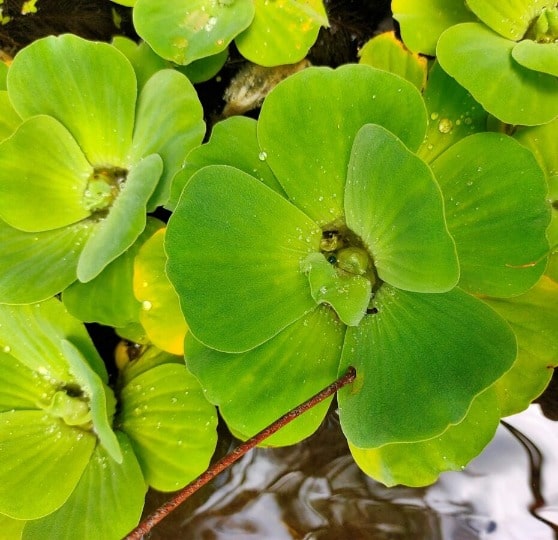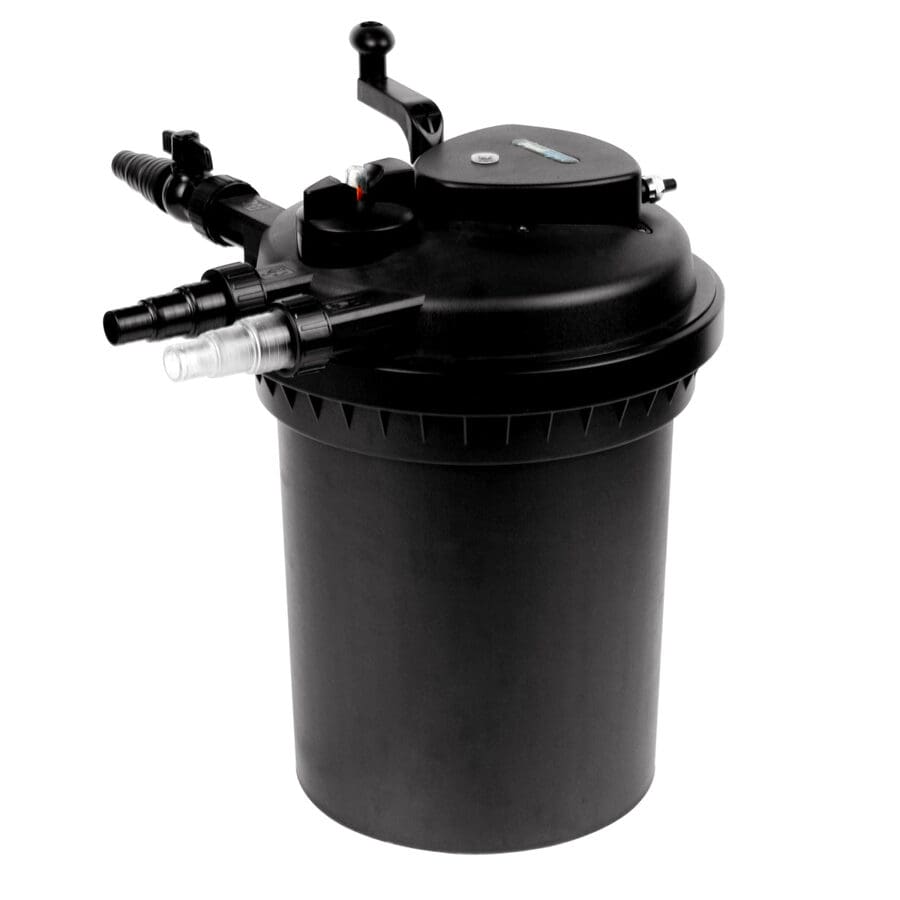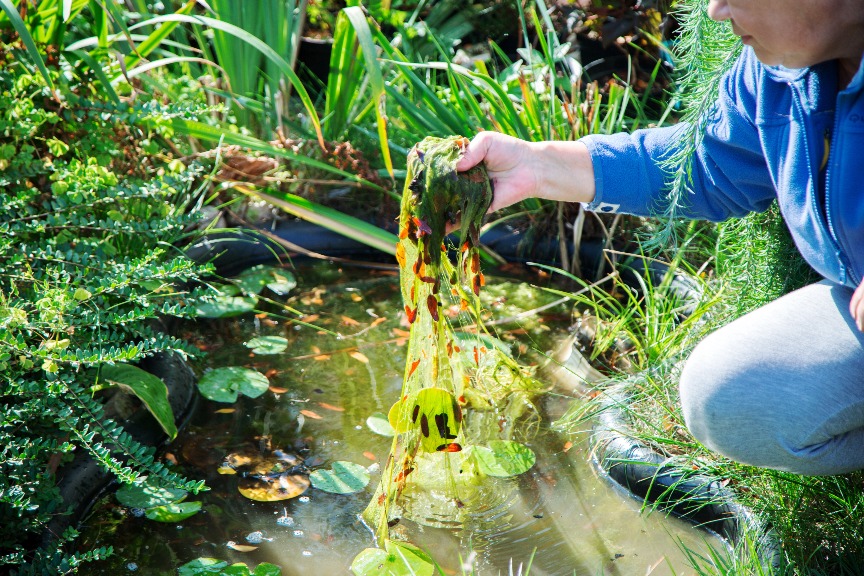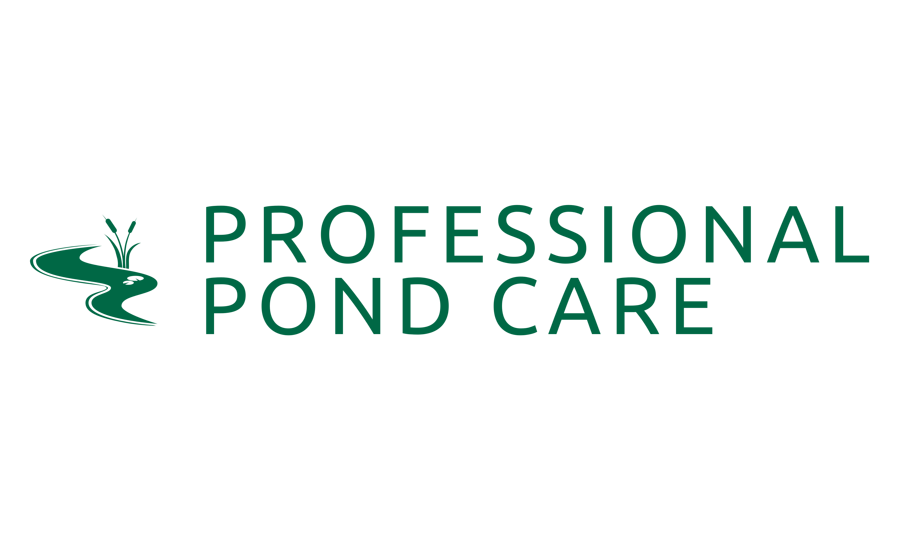How to Treat Pond Algae Naturally and Organically in Australia

Treating algae naturally and organically from your garden or fish pond – in Australia or anywhere – is a task that intimidates many.
There's no questioning it: ponds are much more attractive when they aren't discoloured or overrun by algae.
And the use of chemicals to treat pond algae can be very harmful – to plants, fish, and even people.
However, treating algae naturally and/or organically is not as grimy a job as you might think.
(PSST! Never use chemicals to clean algae out of a pond … it always causes more problems than it solves. Scroll down for organic and natural approaches to treating algae).
What is Algae?
Algae isn't a fungus … and it isn't really a plant, either.
What is it then? Well, it has been described as a “protist” – which is a living organism that isn't an animal, plant, or fungi.
In other words, it's a living organism that doesn't really fit into the scientific categories that we humans have created.
And yet, they are one of the most prominent life forms on the entire planet.
Algae do present qualities similar to plants – but they lack the traditional characteristics (such as stems, roots, leaves, etc).
The best known types of algae are kelp and other seaweeds … but this article is about pond algae.
What Are The Common Types of Pond Algae in Australia?
Green Algae:
This is the algae type that makes ponds look like large bodies of green soup.
Green algae is caused by the sludge at the bottom of the pond (discussed later in this article), and reflects a nutrient imbalance in your pond.
If you leave it unchecked, the increasing algae in your pond will accelerate. And the longer you leave the algae, the more of a stranglehold it will take.
String Algae:
This is the algae that looks like hair when left unchecked, and gets stuck on all your pond features – rocks, waterfalls, and as well as your liners.
It looks ugly, and overtime can block up drains and even strangle your fish.
String algae is caused by similar things to the green algae – especially the nutrient imbalances.
Another cause could be having too many fish in your pond. Some pond-owners buy 5 or 6 koi fish without realising how massive they are going to grow … then, basically, they start dropping larger quantities of faeces all over the base of your pond, increasing the sludge count rapidly.
Why Is Algae Growing in My Pond?
Algae is naturally occurring in ponds, and is actually important that your pond has a bit of algae (this isn't the last time we'll tell you that!).
But large growths of algae – known as algae blooms – are not desirable. And they usually occur due to nutrient imbalances.
Algae blooms often follow a spike in nitrate and phosphate levels, released by too much sludge in the bottom of your pond.
The food increasing your pond's sludge levels is organic matter such as decomposed dead leaves, fish waste, grass clippings, and dead algae.
So having sludge-control methods in place is important. Otherwise, removing sludge from the bottom of your pond every 6 months or so is the best preventative measure for your out-of-control algae. See our “Basic Clean” for more information (scroll down on the link).
How Is Algae Good For a Pond?
Having a bit of algae in your pond is actually essential.
They contributes to proper, healthy water for ponds and can even be eaten as food for your fish.
Here are just a few essential benefits of algae in your pond:
Algae give oxygen and take carbon dioxide;
They are the fundamental centre of your pond's food chain;
Algae actively clean water of pollutants;
And they bring general stability to sediments in the pond.
So – whatever you do – don't go on some hell-bent task to remove and destroy all of the algae in your beloved pond. It will negatively affect its ecosystem – including any fish you might have.
When is Pond Algae a Problem?
Algae is an essential part of your pond, but it can become a problem when it goes through blooms and gets out of control.
It is can be identified as a problem when you start seeing that “green soup” effect in your pond water.
And it can also been considered a problem when it starts sticking to everything (rocks, water features, etc.) and generally not looking very nice.
In short: algae is a problem when your pond is starting to look ugly, and you sense that it is getting overran by algae.
How Can I Naturally and Organically Treat Pond Algae in Australia?
As mentioned already, you should NEVER treat algae with chemicals -- in Australia or anywhere.
They will likely kill your pond plants, and will even stunt the growth of any new pond plants you bring in later.
AND it will seriously harm your fish – perhaps kill them.
Don't do it! Maybe it seems like you're going to save yourself time … but it will only cause you a bigger headache later.
Instead, follow these methods:
1. Starve Algae of Nutrients and Sunlight Using Plants

If you add a lot of pond plants that create shadows in your pond, it will destroy algae by starving it of sunlight.
Water lillies, for example, cover a lot of a pond's surface, blocking sunlight from reaching the inn-er-body of water.
Some plants will also eat the nutrients algae feed off, contributing to a reduction of your pond's long-term algae levels.
Not only do pond plants beat down your algae; they will also add some natural beauty to your pond.
We sell an array of wonderful pond plants all across Australia!
Take a look at our collection.
2. UV Lights

Humans are relatively advanced with technology, these days. And there's no reason pond-owners can't benefit from that!
UV lights control bacteria in a pond and keep it generally “clean.” It is a fantastic, low-effort way to treat and maintain your pond.
We sell industry standard UV filters created by PondMAX to all of Australia.
Take a look at them in our store now.
PSST: Don't expect a UV filter to do all the work for you … they are great! But they aren't magical solutions to all your ponds problems.
3. Remove Sludge and Algae Manually

If things are really out of hand, then maybe you should roll your sleeves up and pull on those heavy duty gloves.
Depending on the severity of your case, you might only need to remove the string algae by hand and vacuum the sludge from the bottom of your pond. We call this a Basic Clean.
If you don't have a pond vacuum, contact us for more information. We don't sell them ourselves, but we can help you to source one.
Alternatively, if you'd prefer not to buy or stock a pond vacuum, contact us to vacuum your pond for you! (Brisbane, Gold Coast, and Sunshine Coast only)
What to Do When Algae Has Taken Over Your Pond...
In extreme cases, however, you might need to perform what we call a Deep Clean.
This requires your pond to be drained of all its water, fish kept in a temporary home, and the pond's innards manually scrubbed.
When a Deep Clean is performed once, you shouldn't need to drain your pond again. You will only need to perform 6-monthly (our recommendation) Basic Cleans (scroll down on this link for more information).
If you want professionals to do the hard work for you, we are an experienced and competitively priced team. (Serving Brisbane, Gold Coast, and Sunshine Coast, only)
Conclusion:
Pond algae, in Australia or anywhere, is extremely normal. And it is nothing to worry about.
But without treating pond algae, your pond might start to look awful.
And the treatments to ponds overrun by algae, in Australia and elsewhere, are not as challenging as you might think (and should NEVER include dousing your pond with chemicals!!).
So there are no excuses! Treat pond algae naturally and organically today – in Austrlia and beyond!
If you need any other advice, contact us directly.
And if you are based in Brisbane, Gold Coast, or Sunshine Coast, and you want some professionals to do the job for you, give our experts a call:

